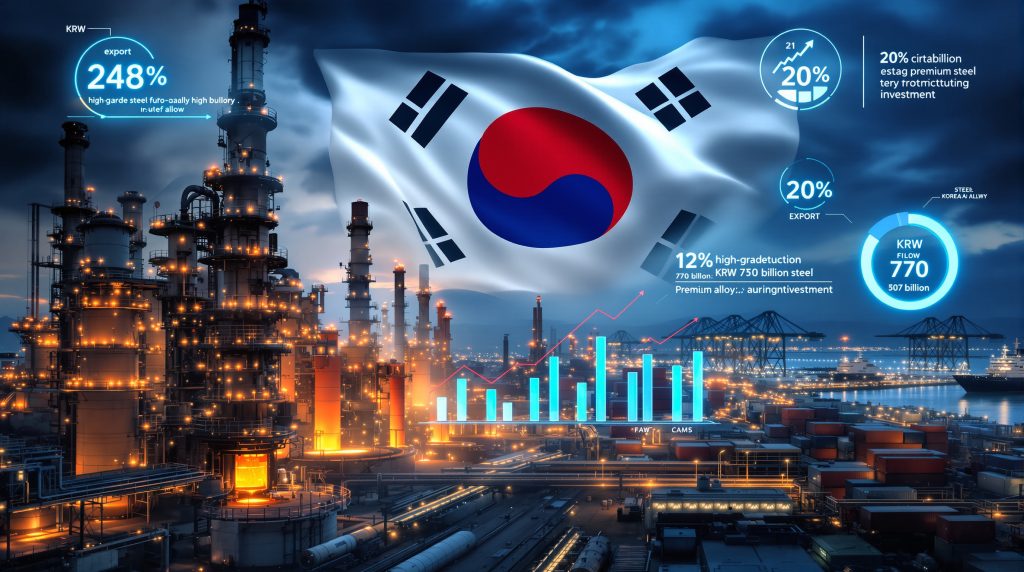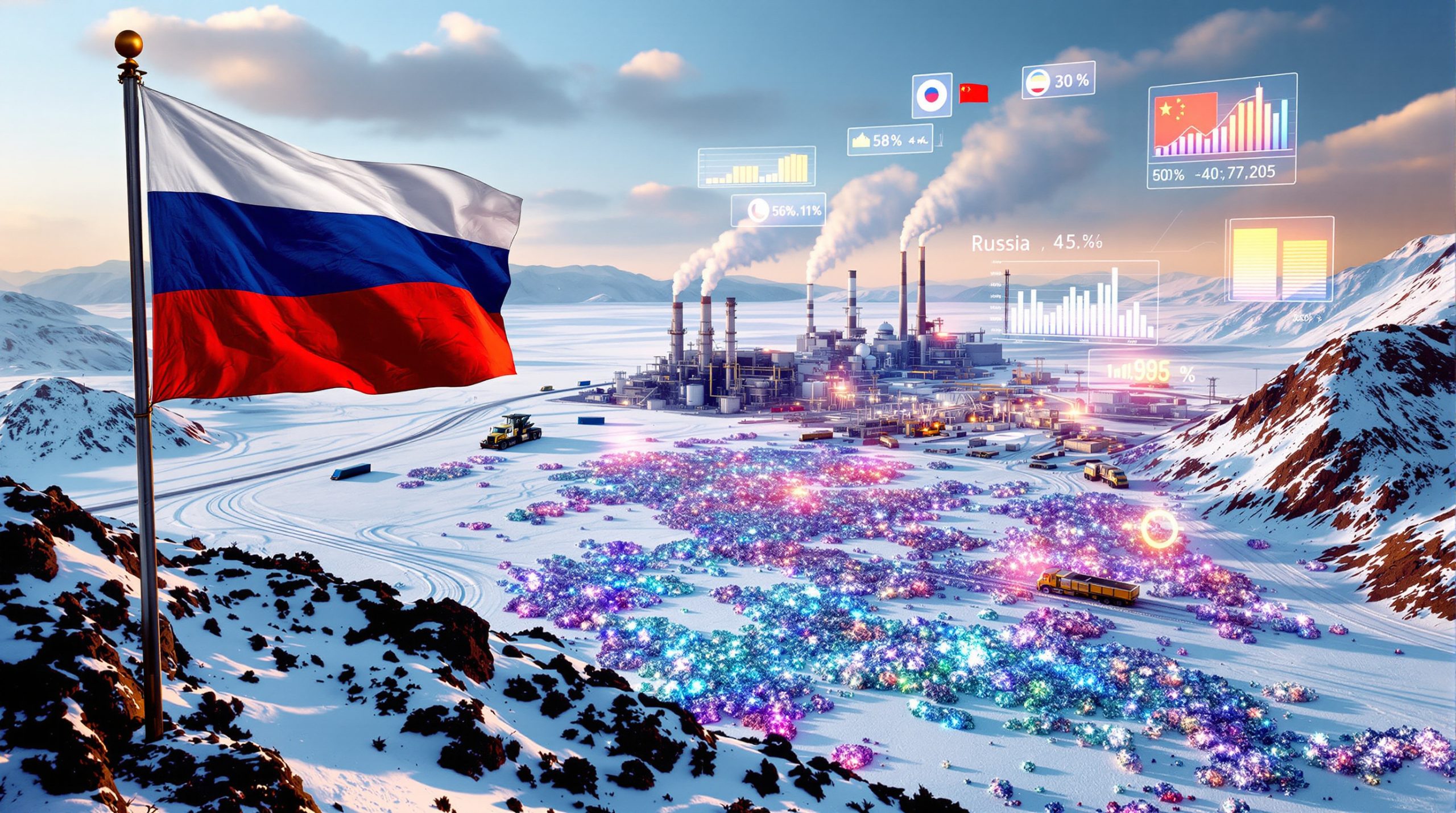South Korea's Steel Industry Faces Major Restructuring Amid Global Trade Pressures
The South Korean government has announced comprehensive plans to restructure its domestic steel industry, marking a significant strategic shift in response to mounting international trade barriers and persistent oversupply challenges. This South Korea steel industry restructuring initiative represents one of the most substantial industrial policy interventions in the Korean steel sector in recent decades.
The restructuring announcement comes as Korean steelmakers grapple with deteriorating market conditions across multiple fronts. Trade tensions have intensified pressure on export-dependent manufacturers, while global overcapacity continues to suppress pricing power and profit margins throughout the industry. Furthermore, the trump tariffs impact has created additional uncertainty for export-oriented steel producers.
Understanding the Current Market Pressures
Korean steel manufacturers are experiencing unprecedented challenges that have fundamentally altered the competitive landscape. The confluence of international trade restrictions and structural oversupply has created a perfect storm for the industry.
The domestic market has shown clear signs of strain, with construction sector demand declining and industrial consumption patterns shifting. These changes have forced industry leaders to reconsider their traditional volume-based business models and explore alternative strategic approaches.
Key Market Indicators Showing Stress:
- Reduced domestic construction activity impacting steel demand
- Increased competition from international suppliers
- Rising production costs amid volatile raw material prices
- Pressure on profit margins from oversupply conditions
The sector's export orientation has become both a strength and vulnerability, as changing international trade policies directly impact Korean manufacturers' access to key markets. In addition, iron ore trends continue to influence production costs and strategic planning decisions.
International Trade Barriers Reshape Market Dynamics
The United States and European Union have implemented significant trade restrictions targeting steel imports, fundamentally altering global trade flows. These measures have forced Korean producers to reassess their export strategies and seek alternative market opportunities.
American trade policy has introduced substantial tariffs on steel and aluminum imports, creating barriers for Korean exporters previously reliant on the US market. The implementation of Section 232 tariffs under national security provisions has particularly affected specialty steel grades where Korean manufacturers held competitive advantages.
Regional Competition Analysis
| Market | Strategic Focus | Impact on Korean Exporters |
|---|---|---|
| United States | Import restrictions through tariffs | Reduced market access |
| European Union | Quota limitations and duty increases | Export volume constraints |
| Southeast Asia | Emerging market opportunities | Potential growth regions |
| Japan | Technology-focused production | Competitive pressure in premium segments |
European Union policies have similarly constrained Korean steel exports through quota mechanisms and increased duty rates. These restrictions have particularly impacted Korean producers of commodity-grade steel products, where margins were already under pressure from global oversupply.
The cumulative effect of these trade barriers has been to redirect global steel flows, creating both challenges and opportunities for Korean manufacturers willing to adapt their strategies. However, the broader us‑china trade war context continues to influence global market dynamics.
Government Response Through Strategic Restructuring
The South Korean Ministry of Industry has outlined a comprehensive approach to address the industry's challenges through coordinated government intervention. This initiative focuses on production capacity adjustments and enhanced support for export-oriented manufacturers.
The government's strategy emphasises proactive measures to optimise production capacity in oversupplied product categories while expanding financial support mechanisms for companies facing trade restrictions. This dual approach aims to strengthen the industry's competitive position during the transition period.
Core Elements of the Restructuring Plan:
- Production capacity optimisation in commodity steel grades
- Enhanced financial support for export-focused manufacturers
- Technology development incentives for advanced steel products
- Environmental compliance assistance programmes
Financial support mechanisms include expanded guarantee programmes designed to maintain cash flow for companies experiencing reduced export revenues. These programmes specifically target small and medium enterprises that may lack the resources to independently navigate trade restrictions.
The capacity adjustment component focuses on reducing production in oversupplied segments while encouraging investment in higher-value product lines. This strategic rebalancing aims to improve overall industry profitability and reduce vulnerability to commodity price cycles.
Transition Toward Premium Steel Production
Korean steelmakers are accelerating their shift from volume-based to value-added production strategies. This transformation involves significant investments in advanced manufacturing technologies and specialised product development capabilities.
The industry's traditional focus on commodity steel production is evolving toward more sophisticated grades that command premium pricing. This strategic pivot requires substantial technological upgrades and workforce development initiatives across manufacturing facilities.
Technology Integration Priorities:
- Advanced metallurgy research and development
- Process optimisation through digital technologies
- Specialty alloy production capabilities
- Quality control system enhancements
Research and development investments are targeting breakthrough technologies in specialised steel grades that serve automotive, aerospace, and infrastructure applications. These markets typically offer better margins and reduced exposure to commodity price volatility.
The transition strategy also emphasises developing proprietary technologies that create competitive moats against international competitors. Korean companies are investing heavily in intellectual property development to support this strategic shift. Consequently, understanding tariffs' investment impact becomes crucial for long-term planning.
Environmental Sustainability Drives Innovation
Environmental considerations are playing an increasingly important role in the South Korea steel industry restructuring efforts. Government policies and market demands are pushing manufacturers toward cleaner production technologies and sustainable manufacturing practices.
The adoption of electric arc furnace technology represents a significant trend within the industry's environmental transformation. This technology offers both environmental benefits and operational flexibility that aligns with the strategic shift toward specialised production.
"Korean steelmakers are investing in low-carbon production technologies as part of broader sustainability commitments while simultaneously improving their competitive positioning in environmentally conscious markets."
Green Technology Implementation Areas:
- Electric arc furnace expansion for reduced emissions
- Energy efficiency improvements in existing facilities
- Waste heat recovery and utilisation systems
- Raw material optimisation to minimise environmental impact
International equipment transfers and facility upgrades are accelerating as companies modernise their production capabilities. These investments support both environmental compliance and operational efficiency objectives.
The focus on sustainability also opens new market opportunities as customers increasingly prioritise environmentally responsible suppliers in their procurement decisions.
Strategic Adaptations by Major Industry Players
Large Korean steelmakers are implementing comprehensive adaptation strategies that go beyond traditional capacity adjustments. These initiatives include vertical integration, strategic acquisitions, and supply chain optimisation measures.
Market consolidation trends are emerging as companies seek to achieve economies of scale and improve their competitive positioning. Strategic acquisitions allow companies to expand capacity in targeted product segments while optimising their overall production portfolios.
Consolidation Strategy Benefits:
- Enhanced market share in domestic segments
- Improved operational efficiency through integration
- Stronger bargaining power with suppliers and customers
- Reduced competition in commodity product lines
Supply chain restructuring initiatives are also gaining momentum as geopolitical tensions influence sourcing decisions. Korean manufacturers are diversifying their supplier bases while strengthening relationships with domestic partners.
Automotive sector supply chains have become particularly important as Korean steelmakers seek to replace lost export volume with domestic automotive production. These relationships provide stable demand and premium pricing opportunities for specialised steel grades.
Global Market Implications and Industry Response
The Korean steel industry's restructuring has broader implications for global steel markets and international trade patterns. Capacity adjustments and strategic shifts by major Korean producers will influence global supply dynamics and regional market competition.
Regional supply chain realignment is accelerating as Korean manufacturers develop new market relationships and export destinations. Southeast Asian markets are receiving increased attention as alternatives to traditional Western export markets.
Technology Transfer Opportunities:
- International research collaboration agreements
- Joint venture development in emerging markets
- Licensing agreements for specialised production technologies
- Knowledge sharing partnerships with academic institutions
Korean companies are leveraging their technological capabilities to develop international partnerships that provide market access while generating licensing revenue. These arrangements help offset reduced export volumes through alternative revenue streams.
The industry's emphasis on innovation and technology development is creating export opportunities for Korean engineering and manufacturing expertise beyond traditional steel product exports. For instance, market volatility hedging strategies are becoming increasingly important for risk management.
Market Pricing and Supply Chain Impacts
The restructuring initiative will likely influence global steel pricing dynamics and supply chain relationships. Capacity reductions in commodity steel grades may contribute to price stabilisation in oversupplied segments.
Korean producers' strategic shift toward premium products is expected to create pricing differentiation opportunities while reducing direct competition with high-volume commodity producers. This positioning strategy aims to improve profit margins and reduce exposure to global oversupply conditions.
Short-term Market Effects:
- Potential supply tightening in specific steel grades
- Price stabilisation through capacity discipline
- Increased competition for premium market segments
- Regional supply chain adjustments
Long-term Competitive Positioning:
- Enhanced technological capabilities and product differentiation
- Improved environmental performance metrics
- Stronger market position in high-value steel applications
- Reduced dependence on commodity pricing cycles
The industry's transformation timeline through 2030 will determine the success of these strategic initiatives and their impact on global market dynamics.
Implementation Challenges and Risk Factors
The restructuring process faces significant implementation challenges that could affect the success of the strategic transformation. Workforce transitions, technology adoption timelines, and market competition all present potential obstacles.
Global oversupply conditions are expected to persist, maintaining pressure on commodity steel prices and export opportunities. Trade policy uncertainty continues to complicate long-term planning and investment decisions for export-oriented manufacturers.
Ongoing Market Pressures:
- Persistent global overcapacity in steel production
- Energy cost inflation affecting production economics
- Raw material price volatility impacting profit margins
- Competitive pressure from international producers
Implementation Risk Factors:
- Workforce transition challenges during facility upgrades
- Technology adoption timeline pressures
- Financial constraints during transformation periods
- Market share defence against aggressive competitors
The success of the restructuring initiative will depend on effective coordination between government support measures and private sector adaptation strategies. Additionally, the government has announced a KRW 400 billion support package to facilitate the industry transformation.
Future Outlook and Strategic Positioning
South Korea steel industry restructuring represents a fundamental shift from traditional volume-based manufacturing toward value-driven production strategies. The comprehensive government support framework, combined with strategic capacity adjustments and technology investments, aims to create a more resilient and competitive industrial sector.
The transformation's success will ultimately be measured by the industry's ability to maintain profitability while adapting to changing global trade conditions and environmental requirements. The four-pillar approach of facility optimisation, trade response mechanisms, innovation investment, and sustainability initiatives provides a framework for long-term competitiveness.
Market observers will closely monitor the execution timeline and effectiveness of these strategic changes as Korean steelmakers navigate the challenging transition period ahead. The industry's ability to successfully implement this South Korea steel industry restructuring will serve as a model for other manufacturing sectors facing similar global trade and environmental pressures.
Disclaimer: This analysis is based on publicly available information and industry observations. Future market conditions, government policy implementations, and company performance may vary significantly from current projections. Readers should conduct independent research before making investment or business decisions related to the steel industry.
Looking to Capitalise on Steel and Mining Sector Opportunities?
Discovery Alert's proprietary Discovery IQ model delivers real-time alerts on significant ASX mineral discoveries, helping investors identify actionable trading opportunities as they emerge in metals and mining markets. Begin your 30-day free trial today and secure your market advantage whilst major industrial restructuring creates new investment prospects across the resources sector.




